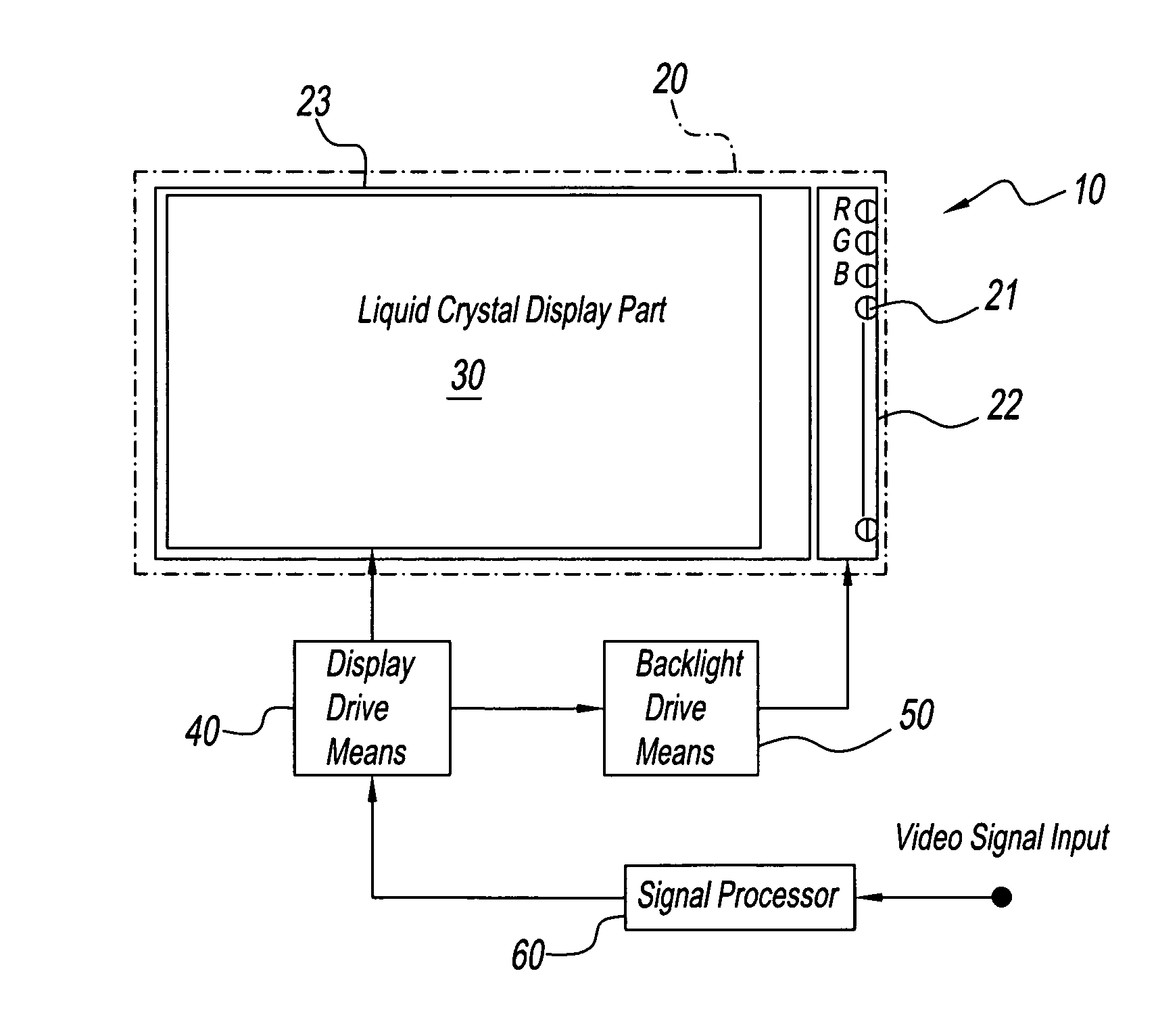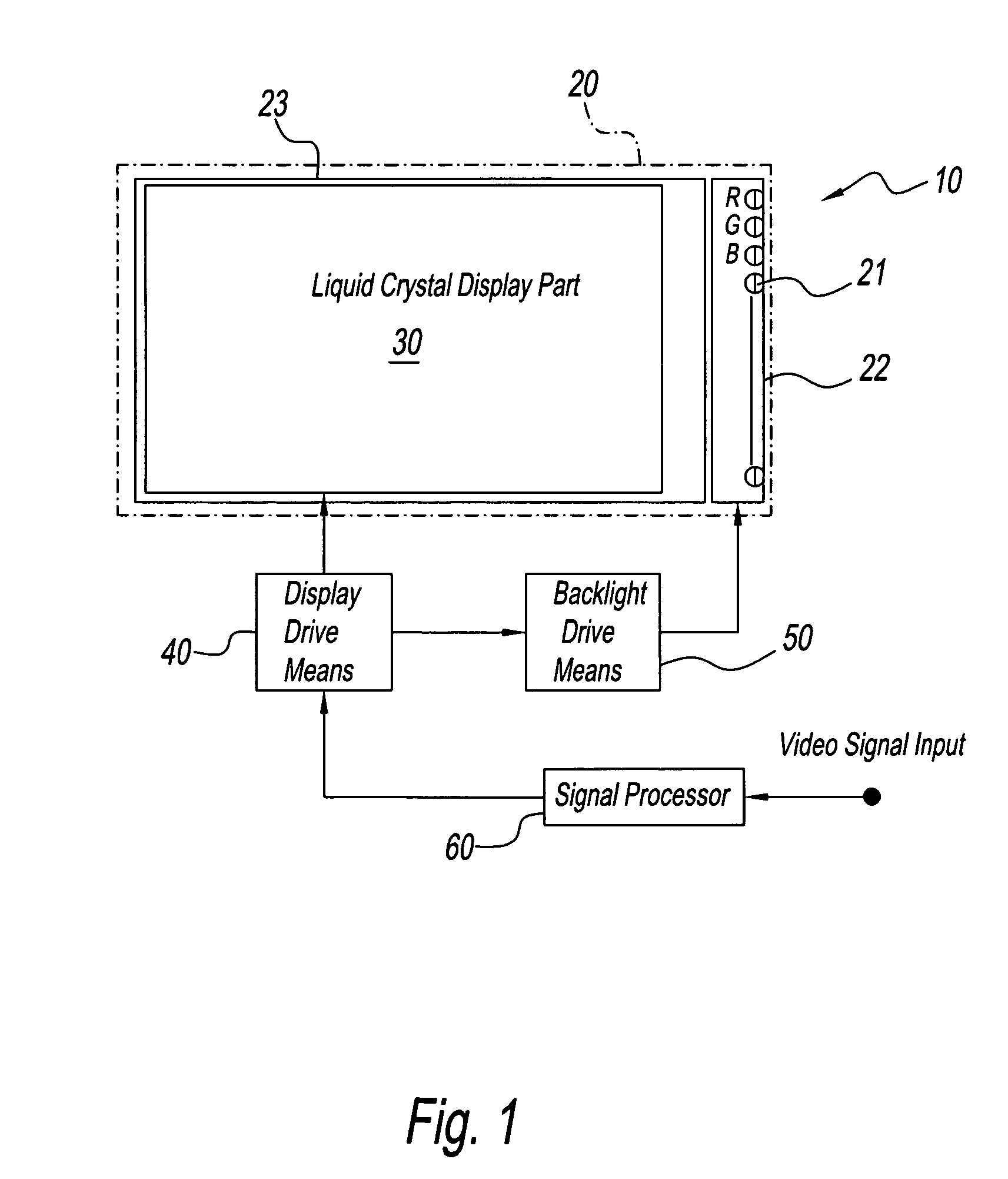Display device
a display device and liquid crystal technology, applied in the field of liquid crystal display devices, can solve the problems of no effective means for the efficient use of light output, and the problem of field sequential systems that are known to pose a problem, etc., to achieve the effect of reducing the generation of heat, and increasing luminous energy
- Summary
- Abstract
- Description
- Claims
- Application Information
AI Technical Summary
Benefits of technology
Problems solved by technology
Method used
Image
Examples
Embodiment Construction
[0015]A preferred embodiment of the display device of the present invention will now be described in further detail while referring to the drawings.
[0016]FIG. 1 is a drawing showing each structural element of the display device of the present invention. A display device 10 of the present invention comprises a display means 20 consisting of a liquid display module 23 and a backlight source 22 that supplies backlight from behind the module. Although not illustrated, there is usually a light guide on the back of liquid display module 23, and light from light source 22 is radiated onto this light guide. The light guide feeds backlight from behind liquid crystal display module 23 over the entire surface of a display part 30. Liquid crystal display module 23 is driven by a drive means 40 and the screen thereof is displayed. Drive means 40 is separate from display means 20 in FIG. 1, but it can also be a single cohesive unit with liquid crystal display module 23 as a part of display means ...
PUM
 Login to view more
Login to view more Abstract
Description
Claims
Application Information
 Login to view more
Login to view more - R&D Engineer
- R&D Manager
- IP Professional
- Industry Leading Data Capabilities
- Powerful AI technology
- Patent DNA Extraction
Browse by: Latest US Patents, China's latest patents, Technical Efficacy Thesaurus, Application Domain, Technology Topic.
© 2024 PatSnap. All rights reserved.Legal|Privacy policy|Modern Slavery Act Transparency Statement|Sitemap



